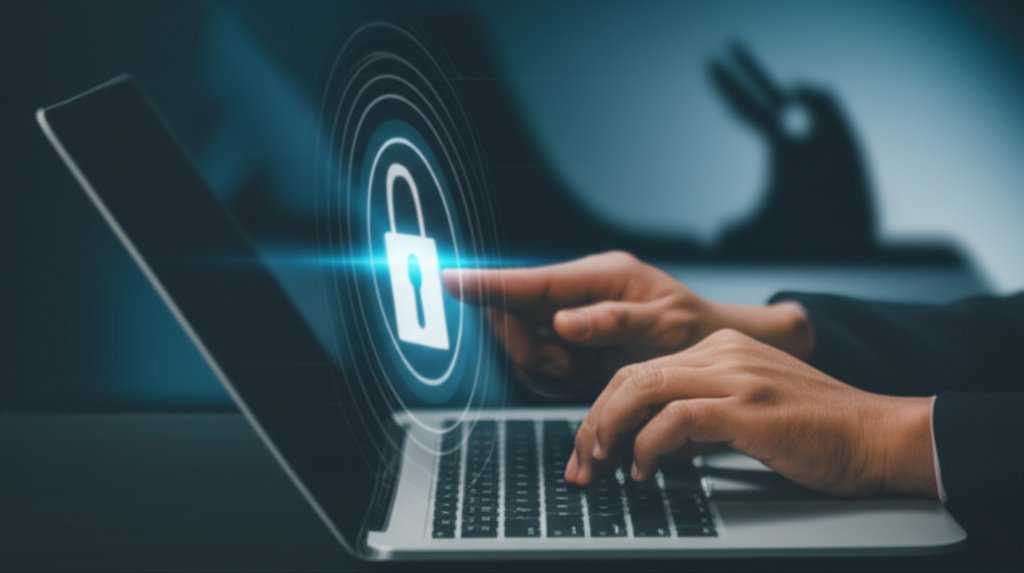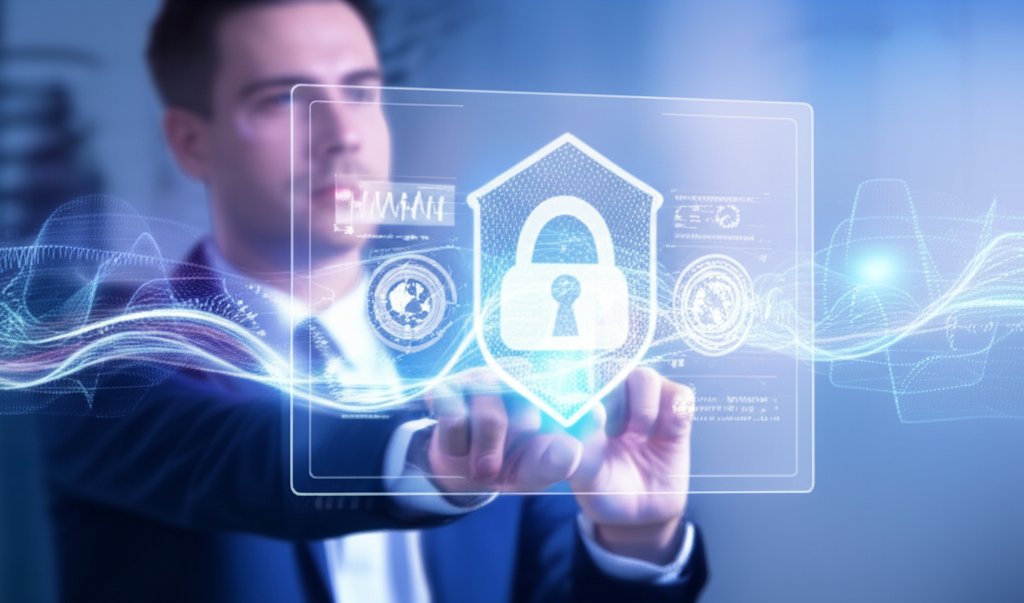In today’s interconnected world, achieving holistic digital security is no longer optional; it’s a fundamental necessity. Your digital identity, encompassing every online account from your email to your banking, is just as crucial as your physical one, representing a potential entry point for cybercriminals. For far too long, we’ve relied on the flimsy lock of a password alone, but let’s be honest: passwords aren’t the impenetrable fortress we once thought. They’re often weak, reused, or easily compromised in data breaches. So, how do we move beyond passwords to truly safeguard what matters most?
The answer lies in building a comprehensive, multi-layered defense. While Multi-Factor Authentication (MFA) forms a critical layer of this strategy, true resilience comes from a broader, integrated approach. This article will guide you through ten essential, actionable practices—from robust password management and encrypted communications to secure data backups and proactive threat modeling—designed to empower both individuals and small businesses to take genuine control of their online security. It’s time to build your digital fortress and navigate the internet with unwavering confidence.
How We Chose These Essential Security Practices
Our selection criteria for these ten crucial digital security practices focused on their tangible impact, practical applicability, and accessibility for everyday internet users and small businesses. We prioritized solutions that:
- Offer significant protection against common cyber threats like phishing, data breaches, and identity theft.
- Are relatively straightforward to implement without requiring deep technical expertise.
- Provide excellent value, whether free or a worthwhile investment.
- Address a broad spectrum of digital vulnerabilities, from individual accounts to overall network safety.
- Are widely recognized and recommended by cybersecurity professionals.
This list isn’t just about theoretical protection; it’s about equipping you with the practical tools to build a robust, effective shield around your digital life.
-
1. Privacy Threats: Understanding Your Digital Landscape
Effective digital defense begins with a clear understanding of the threats you face. Digital privacy threats are not confined to large organizations; they impact everyone. We’re talking about sophisticated phishing scams designed to trick you into revealing credentials, insidious malware that infects your devices, ransomware that locks your files hostage, and pervasive data breaches where companies you trust leak your personal information. Then there’s identity theft, which can devastate your life, or the more subtle tracking from advertisers silently collecting your browsing habits. It’s a vast and evolving landscape of risk.
Why It Made the List:
Understanding these threats is the foundational step for any effective security strategy. You cannot protect what you don’t know is vulnerable. This knowledge empowers you to identify specific risks, evaluate potential dangers, and make informed decisions about your digital behavior, moving beyond passive worry to proactive defense. It helps you assess your own “threat model” – what are you trying to protect, and from whom?
Best For: Anyone using the internet; small businesses seeking to understand their risk profile.
Pros:
- Empowers informed decision-making.
- Helps prioritize security efforts.
- Increases overall digital literacy.
Cons:
- Requires ongoing education as threats evolve.
- Can feel overwhelming initially.
-
2. Password Management: Your Digital Vault
Just as you wouldn’t use a single key for your home, car, and office, relying on weak or reused passwords for your digital life is an unacceptable risk. The “password problem” is pervasive: we’re expected to remember dozens of complex, unique passwords for all our online accounts, a task that is simply impossible for most people. This leads directly to weak, reused credentials, which are the easiest targets for hackers. A single data breach on one site can compromise all your accounts if you’re reusing passwords. That’s why a password manager isn’t just a convenience; it’s a security imperative.
Why It Made the List:
A reputable password manager generates strong, unique passwords for every account, stores them securely in an encrypted vault, and automatically fills them in for you. This eliminates the need to remember anything other than your robust master password, drastically reducing your attack surface. Tools like 1Password, Bitwarden (a free and open-source option), and LastPass are excellent choices. Bitwarden, for instance, offers robust free features for individuals, while 1Password provides a more premium experience for families and teams, often costing around $3-5 per month.
Best For: Everyone with multiple online accounts; businesses needing to enforce strong password policies.
Pros:
- Generates and stores strong, unique passwords automatically.
- Reduces the risk of credential stuffing attacks.
- Simplifies login processes across devices.
- Often includes secure note storage and identity autofill.
Cons:
- Requires trust in the password manager provider.
- If your master password is compromised, all accounts are at risk (though this is mitigated by strong MFA on the manager itself).
-
3. Multi-Factor Authentication (MFA): The Essential Second Lock
Even the most robust, unique password isn’t impervious to sophisticated attacks or data breaches. This is precisely why Multi-Factor Authentication (MFA) is not just a recommendation, but an essential second, or even third, layer of defense. MFA requires you to verify your identity using two or more distinct “factors” from different categories: something you know (like a password), something you have (like your phone or a hardware key), or something you are (like your fingerprint or face). This significantly reduces the risk of unauthorized access, even if your password falls into the wrong hands.
Why It Made the List:
MFA is a verifiable game-changer. It blocks roughly 99.9% of automated attacks, rendering a stolen password nearly useless for attackers. When you activate MFA, you’re not just adding another step; you’re creating a robust barrier that’s incredibly difficult for attackers to bypass. For example, if you use an authenticator app, a hacker would need not only your password but also physical access to your phone to get the time-based one-time password (TOTP). For businesses, mandating MFA across all critical systems, especially email and cloud services like Microsoft 365 or Google Workspace, is a non-negotiable practice. It’s often required for compliance and dramatically reduces the risk of significant data breaches. You’ll find detailed guides on how to implement MFA for various services within their security settings.
Understanding Different MFA Methods (and Their Security Levels)
- SMS/Text Message Codes: While better than nothing, SMS is considered the least secure MFA method due to vulnerabilities like SIM swapping (where attackers trick carriers into porting your number to their device) and interception.
- Email Codes: Similar to SMS, these are vulnerable if your email account itself is compromised. Often a fallback option, not a primary defense.
- Authenticator Apps (TOTP): Apps like Google Authenticator, Authy, or Microsoft Authenticator generate time-sensitive codes. They’re more secure than SMS/email because the code never leaves your device and isn’t tied to your phone number.
- Push Notifications: Convenient (you just tap “Approve” on your phone), but can be susceptible to “MFA fatigue” attacks, where attackers spam you with requests hoping you’ll accidentally approve.
- Biometrics: Fingerprint or facial recognition (e.g., Face ID, Windows Hello) offers high convenience and good security, especially when tied to the device itself.
- Hardware Security Keys (FIDO2/Passkeys): These physical devices (like YubiKey or Google Titan) are the gold standard. They’re phishing-resistant because they cryptographically verify the website’s legitimate URL, meaning even if you’re on a fake site, the key won’t authenticate. Passkeys, built on FIDO2, aim to offer the same phishing resistance without needing a physical key, leveraging your device’s built-in security.
Remember to address the safe storage of backup codes (e.g., in a password manager or secure physical location) in case you lose your MFA device. And always be wary of social engineering tactics; MFA prevents credential theft, but it doesn’t always stop you from being tricked into giving access.
Best For: Every online account you own; absolutely mandatory for business accounts, especially those with sensitive data or administrative privileges.
Pros:
- Drastically reduces unauthorized access risk.
- Protects against phishing, credential stuffing, and brute-force attacks.
- Offers varying levels of security depending on the method chosen.
Cons:
- Can add a minor step to the login process.
- Risk of losing your MFA device or backup codes.
- Some methods (SMS, push notifications) have inherent vulnerabilities.
-
4. VPN Selection: Protecting Your Connection
Your online activity, especially on public Wi-Fi, is often exposed. Without protection, your data travels through networks susceptible to interception, tracking, and surveillance. This means anyone with the right tools could potentially snoop on your browsing, intercept your passwords, or track your online activity. A Virtual Private Network (VPN) creates an encrypted, private tunnel between your device and the internet, routing your traffic through a secure server. This hides your IP address, encrypts your data, and makes it much harder for third parties to monitor your online presence. It’s like putting an opaque, locked box around everything you send and receive online.
Why It Made the List:
A reliable VPN is crucial for maintaining privacy and security, particularly when you’re outside your home network. When choosing a VPN, look for providers with a strict no-logs policy (meaning they don’t record your activity), strong encryption (like AES-256), a wide selection of servers, and a kill switch feature that automatically disconnects you from the internet if the VPN connection drops. Popular, reputable choices include ExpressVPN, NordVPN, and ProtonVPN (which also offers a decent free tier). While prices vary, a good VPN usually costs around $5-10 per month, often with discounts for longer subscriptions. Always avoid free VPNs that don’t have clear privacy policies, as they might be selling your data.
Best For: Anyone using public Wi-Fi; individuals concerned about online tracking; businesses with remote employees or those handling sensitive data.
Pros:
- Encrypts your internet traffic, protecting it from snoopers.
- Hides your IP address, enhancing anonymity.
- Bypasses geo-restrictions (though this shouldn’t be the primary reason for use).
- Essential for secure remote work.
Cons:
- Can sometimes slow down internet speeds.
- Reputable services often require a paid subscription.
- Not all VPNs are created equal; some have dubious privacy practices.
-
5. Encrypted Communication: Speak Freely and Securely
In an era dominated by digital communication, ensuring the confidentiality of your conversations is paramount. Most standard messaging services lack true end-to-end encryption, leaving your messages vulnerable to interception and surveillance by the service provider or malicious actors. End-to-end encryption guarantees that only the sender and the intended recipient can read a message, even if it falls into the wrong hands. It’s like having a private conversation in a soundproof room, where no one else can eavesdrop.
Why It Made the List:
Adopting encrypted messaging apps protects your sensitive conversations from prying eyes. For personal use, Signal is widely regarded as the gold standard, offering strong end-to-end encryption by default for messages, calls, and video. It’s free, open-source, and has been praised by security experts. While WhatsApp also offers end-to-end encryption, its parent company (Meta) has a broader data collection model. For businesses, secure internal communication platforms with robust encryption and granular access controls are vital. ProtonMail (for email) and Signal are excellent choices for privacy-focused communication. Choosing these tools is a conscious decision to protect your dialogue, ensuring that what you say stays between you and your intended recipient.
Best For: Individuals and businesses discussing sensitive information; anyone prioritizing message privacy.
Pros:
- Ensures only intended recipients can read messages.
- Protects against eavesdropping and data interception.
- Builds trust in digital communication.
Cons:
- Requires all parties to use the same encrypted service.
- Some features may be less convenient than mainstream apps.
-
6. Browser Privacy: Your Gateway to the Web
Your web browser is the gateway to your online world, but without proper configuration, it can also be a significant privacy liability. Default settings in many browsers prioritize convenience and data collection, enabling third-party trackers, storing extensive browsing history, and feeding your online habits to advertisers. This can lead to persistent targeted advertising, intrusive profile building, and potentially leaking your online habits to various entities. Think of your browser as the front door to your digital home; you want to make sure it’s securely locked and not letting uninvited guests peek inside.
Why It Made the List:
Hardening your browser is an essential step in minimizing your digital footprint and protecting your online activity. Switching to privacy-focused browsers like Brave (which blocks ads and trackers by default and includes a built-in VPN option), Firefox (with its robust privacy settings and extensions), or Tor Browser (for extreme anonymity) can make a significant difference. Beyond the browser choice, regularly clearing cookies and cache, using privacy-enhancing extensions like uBlock Origin (an effective ad blocker) and Privacy Badger (blocks invisible trackers), and disabling third-party cookies are simple yet effective steps. For small businesses, enforcing consistent browser settings and approved extensions across employee devices can significantly reduce risks from malicious websites and data leakage.
Best For: Everyone who uses the internet; businesses seeking to protect employee browsing and reduce exposure to malicious content.
Pros:
- Reduces online tracking and targeted advertising.
- Protects against malicious scripts and phishing attempts.
- Gives you more control over your data.
Cons:
- Some websites may not function perfectly with aggressive privacy settings.
- Requires active management and awareness of settings.
-
7. Social Media Safety: Navigating the Public Square
Social media platforms, while connecting us, also act as vast data repositories and public stages for our lives. Every post, like, and share contributes to a digital profile that can be exploited by advertisers, identity thieves, or even used for sophisticated social engineering attacks. Oversharing, neglecting privacy settings, and falling for scams are common pitfalls that can expose personal information, lead to account takeovers, or create opportunities for real-world risks. It’s a powerful tool, but you wouldn’t leave your front door wide open when you’re at a party, would you?
Why It Made the List:
Securing your social media presence involves a combination of smart behavior and diligent privacy management. Always review and restrict your privacy settings to “friends only” or “private” where possible. Be judicious about what personal information you share – your full birthday, home address, or even your pet’s name can be used to answer security questions. Use strong, unique passwords (courtesy of your password manager) and, crucially, enable MFA on all your social media accounts. Be highly suspicious of unsolicited messages, quizzes, or links, as these are often phishing attempts. Regularly audit your friends list and remove old apps that have access to your profile. Consider using privacy-focused alternatives or minimizing your presence on data-hungry platforms where possible.
Best For: All social media users; businesses managing public profiles.
Pros:
- Protects personal information from public exposure.
- Reduces the risk of identity theft and social engineering.
- Maintains professional reputation.
Cons:
- Requires ongoing vigilance and privacy setting reviews.
- Can limit social reach for public figures or businesses.
-
8. Data Minimization: Less is More
In the digital economy, the default is often excessive data collection. Companies amass vast amounts of information—from purchase histories to location data—creating a significant liability. The more data held about you, the greater the risk that it could be exposed in a data breach, sold to third parties, or used for targeted manipulation. We are often too generous with our information, consenting without fully understanding the implications.
Why It Made the List:
Data minimization is the principle of collecting, storing, and using only the absolute necessary amount of personal data. For individuals, this means critically evaluating every app’s permissions before granting them, opting out of data sharing whenever possible, and using privacy-focused services (like ProtonMail for email or Signal for messaging) that collect less data by design. For example, when signing up for a service, ask yourself if they *really* need your phone number, or if an email address will suffice. For small businesses, this practice extends to your customers’ data too. Only collect what is essential for your service, store it securely, and have a clear data retention policy. Regularly audit what data you hold and delete what’s no longer needed. This proactive approach not only enhances privacy but also reduces the impact of potential data breaches by minimizing the sensitive information that could be exposed.
Best For: Everyone concerned about data privacy; businesses handling customer or employee data.
Pros:
- Reduces exposure in data breaches.
- Limits tracking and profiling by third parties.
- Simplifies compliance with data protection regulations.
Cons:
- Requires conscious effort and vigilance in online interactions.
- Some services may require more data than you’d prefer to function.
-
9. Secure Backups: Safeguarding Your Memories and Work
Data loss is not a matter of *if*, but *when*. Hardware failures, ransomware attacks, theft, or even accidental deletion can instantly erase irreplaceable family memories, critical documents, or years of business records. Relying solely on your primary device for valuable data is an unacceptable gamble. Without a robust backup strategy, you’re one unfortunate event away from losing everything. Your digital life is valuable, and it’s time to treat it as such.
Why It Made the List:
Implementing a secure backup strategy is non-negotiable for both individuals and businesses. The “3-2-1 rule” is a widely recommended approach: keep three copies of your data, on two different types of media, with one copy offsite. This could mean having your data on your computer (1), an external hard drive (2), and a cloud backup service (3). For cloud backups, choose reputable providers like Backblaze (unlimited, affordable personal backups), Carbonite, or OneDrive/Google Drive (with MFA enabled and client-side encryption for sensitive files). For businesses, consider solutions like Veeam or specialist cloud backup providers that offer robust encryption, versioning, and fast recovery capabilities. Always ensure your backups are encrypted, and regularly test your recovery process to ensure your data is accessible when you need it most.
Best For: Everyone with valuable digital data; all businesses.
Pros:
- Protects against data loss from hardware failure, theft, or ransomware.
- Allows for quick recovery after incidents.
- Provides peace of mind.
Cons:
- Requires an initial setup and ongoing management.
- Cloud storage often incurs a subscription cost.
-
10. Threat Modeling: Anticipating the Next Move
Why react to security incidents when you can proactively identify and mitigate potential weaknesses before an attacker exploits them? Threat modeling is a structured, strategic approach to anticipating, prioritizing, and addressing potential threats to your digital assets and personal privacy. It encourages you to think like an attacker: “What do I have that’s valuable? Who would want it? How would they try to get it? What can I do to stop them?”
Why It Made the List:
Threat modeling, while sounding technical, can be applied in a simplified way by anyone. For an individual, it might mean thinking: “My banking app is critical. An attacker might try phishing me or doing a SIM swap. So, I need strong MFA (hardware key if possible), and I’ll avoid clicking suspicious links related to my bank.” For a small business, it’s about mapping out your critical assets (e.g., customer database, financial systems), identifying potential entry points (e.g., employee email, remote access, website vulnerabilities), and then designing defenses. This might involve regular vulnerability assessments, penetration testing, or simply reviewing your systems with a critical eye. It’s a continuous process, not a one-time fix. By consistently asking “what if?”, we can build more resilient systems and personal habits, minimizing the impact of potential data breaches or cyberattacks before they even occur. It moves you from a reactive posture to a truly proactive one.
Best For: Anyone serious about advanced personal security; all businesses regardless of size.
Pros:
- Identifies vulnerabilities before exploitation.
- Helps prioritize security investments and efforts.
- Fosters a proactive security mindset.
Cons:
- Can be complex for highly intricate systems.
- Requires ongoing effort and adaptation to new threats.
Quick Reference: Digital Security Practices Comparison
Here’s a snapshot of our recommended practices, their primary benefit, and for whom they are best suited:
| Practice | Primary Benefit | Best For | Estimated Cost (per month) |
|---|---|---|---|
| Privacy Threats Awareness | Informed Risk Management | Everyone | Free (time investment) |
| Password Management | Strong, Unique Passwords | Everyone | Free – $5 |
| Multi-Factor Authentication (MFA) | Prevents Unauthorized Access | Everyone (Crucial for Businesses) | Free (hardware keys $25-50 one-time) |
| VPN Selection | Encrypts Internet Traffic | Public Wi-Fi Users, Remote Workers | $5 – $10 |
| Encrypted Communication | Private Messaging | Sensitive Discussions | Free |
| Browser Privacy | Reduces Online Tracking | Everyone | Free |
| Social Media Safety | Protects Personal Information | Social Media Users | Free (time investment) |
| Data Minimization | Reduces Data Exposure | Everyone, Businesses | Free (time investment) |
| Secure Backups | Prevents Data Loss | Everyone, Businesses | $5 – $15 |
| Threat Modeling | Proactive Vulnerability Identification | Individuals, Businesses | Free (time investment) |
Conclusion: Your Shield Against Cyber Threats
The digital world can indeed feel overwhelming, full of invisible threats and complex technologies. However, by diligently implementing these practical, layered security practices, you’re not just reacting to danger; you’re building a resilient, proactive defense. From understanding the privacy threats lurking online to establishing secure backups, each step fortifies your digital presence and empowers you to navigate the internet securely.
If you’re wondering where to begin, we urge you to focus on the fundamentals. To truly protect your digital life, start with a reliable password manager and enable Multi-Factor Authentication (MFA) on every critical account today. These two practices alone will significantly elevate your security posture and empower you to take control of your digital destiny with greater confidence.









